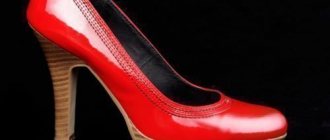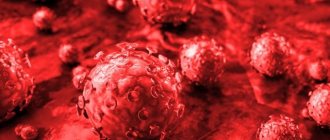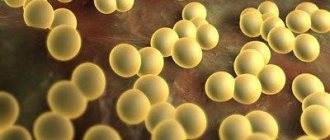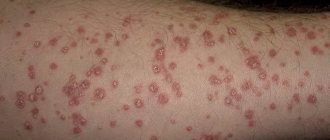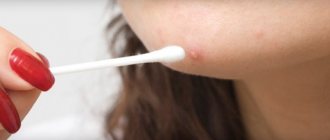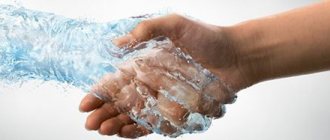Key Facts
Warts on the hands do not appear out of nowhere. Their appearance is caused by papillomavirus, which is ubiquitous and can be present inside the body from birth. However, the wart does not necessarily grow immediately. Some kind of stimulating factor needs to work. Photos from our new collection will tell you more about this unpleasant phenomenon.
Causes and mechanism of the appearance of neoplasms
A wart can appear on anyone at any age. The culprit is the human papillomavirus (HPV), which has more than a hundred different types. Most viruses do not have a tendency to become malignant, but in each specific case, doctors prefer to conduct appropriate tests to be sure of the properties of the tumor.
Warts appear in a variety of places, including on the palms. It is the palms that most often take part in handshakes, touches, etc.
They become infected with the virus upon contact with a carrier who, by the way, may not have warts on his body.
Doctors identify the following reasons leading to HPV infection:
contact with a sick person;
- presence of small injuries on the palms;
- weakened immune system;
- contact with the belongings of a sick person;
- staying in crowded places - baths, saunas, swimming pools, gyms, etc.
After the virus enters the body of a new host, warts on the palms may not appear for two to six months. This time is called the incubation period, when the virus is already present in the body, but has not yet begun to exert its effect. If a person has a very strong immune system, warts in the area of the palms do not appear at all.
You can notice a thickening on the palm and a subsequent growing wart when the immune system has sharply weakened. This condition can be provoked by infectious diseases, chronic inflammatory processes, and cancer. In childhood, a wart on the palm becomes evidence of malnutrition, possible influences of stress, etc.
Ecology is also of a certain importance - people with warts are more often registered in large industrial cities, where the level of harmful emissions is high.
Having penetrated the patient’s body, the virus is integrated into the human genome. This affects the occurrence of abnormal processes, including cell proliferation. The area affected by the virus begins to be actively supplied with blood, which leads to cell proliferation and an increase in their number. This is how a wart appears on the surface of the palm.
The time it takes for a wart to appear varies – in some people it appears rapidly within a couple of weeks, while in other patients the growths increase slowly, over several months or even years.
What to do?
Removal is the first thing a person with manifested HPV thinks about. Note that warts that grow on the fingers, as in the photo, can disappear on their own. You should think about the possibility of removal if more than two years have passed since the appearance of the growth or if the number of growths has begun to increase.
Cauterizing and mummifying agents for removing warts on the palm
There are several chemicals that have a keratolytic effect and are most often used to combat skin imperfections. These are salicylic and lactic acids, urea. After application, they gradually melt the wart tissue and destroy cells infected with the virus.
- Collomac solution (20% salicylic acid, 5% lactic acid, 2% polidocanol).
- Liquid Duofilm (16.7% salicylic acid, 16.7% lactic acid).
- Anti-callus ointment (salicylic acid, lactic acid).
- Salicylic alcohol solution (more than 2% salicylic acid).
- Salipod patch (salicylic acid, sulfur, rosin).
- Salicylic ointment (over 2% of active ingredient).
- Leuko (salicylic acid) patch.
The duration of treatment with drugs containing keratolytic substances depends on the size of the wart and the concentration of the active component.
The strength of the effect is significantly influenced by the amount of the main ingredient in the solution, gel or ointment. However, too concentrated products can cause burns. The optimal salicylic acid content for home use is above 2%, but less than 20%. Prices for drugs in pharmacies vary: salicylic acid and ointment - from 18 to 30 rubles, Dermavit and Collomak solutions - from 300 to 400 rubles.
Preparations based on solutions of alkalis, salts, phenol and metacresol, as well as those containing keratolytic substances, are intended for external use. The cauterizing agent coagulates proteins within the cells. The effect of the concentrated chemical is also expressed in the dehydration of living tissues.
Cauterizing and mummifying agents act quickly and destroy growth on the palm in a matter of days.
Mummification of the pathological growth occurs. Gradually, the color of the wart darkens and becomes black-brown. The formation shrinks and dries. A scab forms, which peels off on its own after a few days or weeks.
- Ampoules with Solcoderm solution (concentrated acids: nitric, acetic, oxalic, lactic and copper nitrate).
- Cosmetic liquid SuperClandestine (sodium hydroxide and salts).
- Gel Dermavit (sodium hydroxide and 10 other components).
- Verrucacid solution (58.8% phenol, 39.2% metacresol).
- Lekker Superclean (sodium or potassium hydroxides).
- Superclean solution (potassium and sodium hydroxides).
- Feresol solution (60% phenol and 40% tricresol).
Prices for drugs in pharmacies: Super Chistotel, Super Chistotel lekker - from 18 to 100 rubles, Verrukacid - 250 rubles, Solcoderm - 780 rubles.
Small formations without a deep root can be eliminated independently. How to remove warts on hands at home? For this purpose, effective remedies and medicinal plants are used. You should first consult a dermatologist. Proven recipes include the following:
- It is useful to lubricate the formations with celandine juice from leaves collected in the spring. Procedures must be performed every day. It is important to follow safety precautions, since the juice is considered poisonous.
- The Kalanchoe leaf must be crushed. Painful areas are treated with gruel and tied with gauze. The product is kept overnight, the procedures are performed every evening.
- The onion is cut into thin slices, placed in a container, and poured with vinegar. After 2-3 hours they are applied to the warts. The onion must be sealed with adhesive tape. Sessions are performed in the evenings. The course lasts up to 5 days.
- Compresses with wormwood are applied to the plaques daily for a week. You will need 3 tbsp. l. dried flowers, which are steamed in boiling water (1 cup). The product is used after infusion.
- Hot baths are made using the herb bugs. Pour boiling water (1 glass) over the grass (3 tablespoons). After 2 hours, you need to strain and heat to 40 degrees. The procedure lasts 10 minutes.
What will happen if left untreated?
Alas, not all of the types of warts on the hands are purely an aesthetic problem, as many are accustomed to believe. Above you could see photos depicting multiple growths - further growth of warts is one of the possible unpleasant consequences of refusing timely treatment.
Treatment
It is extremely rare that the body finds the strength to fight the virus and the warts disappear a year after their appearance.
If this does not happen, then the formations must be removed using medications or medical instruments in a dermatologist's office. Let's answer the question: how can you remove a wart on your hand?
- Burning with liquid nitrogen.
- Use of medications.
- Herbal therapy.
- Laser surgery.
- Electrocoagulation.
- Surgical intervention.
Collomak is a drug containing lactic and salicylic acid. Collomak is applied using an applicator to the infected area of skin several times a day. Burning and itching may occur at the site of treatment with the drug.
Duofilm is a drug similar in composition to Collomac. It is used in a similar way.
Verrucacid - contains an antibiotic and an antiseptic. Apply to steamed and softened areas 7 to 10 times with an interval of 5 minutes. When using verrucacid, precautions should be taken. The product should not come into contact with healthy skin and mucous membranes.
Local treatment of growths must necessarily be accompanied by the use of drugs that fight viruses.
How to remove warts on hands? The latest drugs and methods make it possible to eliminate formations, but HPV will still remain in the body. If provoking factors are preserved, warts may form again. There are several treatment methods. The doctor should choose a method after becoming familiar with:
- medical history;
- concomitant diseases;
- patient's age;
- the size of the warts.
Do not scratch, cut, burn, or scrape formations. The virus spreads to other areas, and pathogenic microbes can get into the wound.
Often, a person’s papillomas remain for life. However, in adolescence and childhood, spontaneous disappearance of papillomas is possible.
However, adult patients should not particularly hope for this. Of course, a wart can go away on its own. But usually papillomas remain on the body and even increase in number. Therefore, to get rid of skin tumors, it is necessary to treat them. After all, papillomas are not only easily injured and bleed, they also look unsightly.
Strangers avoid communicating with a person covered in skin growths, fearing infection (and with good reason). As a result, the patient himself develops an inferiority complex, which leads to stress, neuroses and, as a consequence, many other diseases. In addition, there is a risk of transferring the virus to other parts of the body, for example, to the face.
Other indications for the treatment of papillomatosis:
- formations are too large,
- inflammation of papillomas,
- the patient's state of immunodeficiency,
- high probability of injury to formations.
There is no specific therapy aimed at human papillomavirus. Therefore, treatment of papillomatosis is mainly symptomatic and comes down to removal of the formations. Other treatment methods, such as strengthening the immune system, are of secondary importance.
To strengthen the immune system and nonspecific antiviral therapy, drugs with interferon and immunomodulators (Cycloferon, Viferon, isoprinosine), and vitamin complexes are used.
Papillomas on the arm are easier to cure than on other parts of the body. This is due to the fact that the skin on the hand is relatively rough, and after removing the growths, relatively small scars are formed that heal relatively quickly.
Papillomas can be removed using medication, hardware or surgery. Many patients prefer the gentle effects of medications. In addition, a course of treatment with medications at home is often cheaper than removing tumors at the doctor. However, the disadvantage of home treatment may be its significant duration.
Hardware and surgical methods help get rid of papilloma in 1-2 sessions. This may be followed by a relatively short recovery period while the skin heals.
Medical science knows five types of warts. Not all of them can appear on the palm of your hand. Filiform and genital warts are not found in this area of the body. Most often, the palm is covered with simple, vulgar or flat warts. Externally, warts on the palms look like dense nodules, painless to the touch. The size of the wart varies from 3 mm to one centimeter.
Warts vary in color in a variety of colors, from transparent, flesh-colored to dark brown. Most often, the surface of the wart has a slight roughness.
In most cases, a wart appears singly, but as HPV progresses, groups of small tumors that are similar to each other begin to form around the primary wart. If you remove the primary, “mother” wart, the small growths disappear on their own.
What do hand growths look like?
The clinical picture of warts consists of the morphological characteristics inherent in the skin formation. Their typical external signs will be the following:
- The primary element is a knot.
- Dimensions – up to 10 mm.
- The consistency is thick.
- Color: flesh-colored, grayish, pink-brown.
- The surface is first smooth, then rough.
- Quantity – single or multiple.
- Subjective sensations – most often it does not hurt.
Having noticed such changes on the skin of the palms, it is best not to waste time solving the problem on your own, but to seek help from a specialist. Usually the diagnosis is not in doubt, but in some cases it is necessary to differentiate warts from other conditions (molluscum contagiosum, lichen planus, warty tuberculosis).


